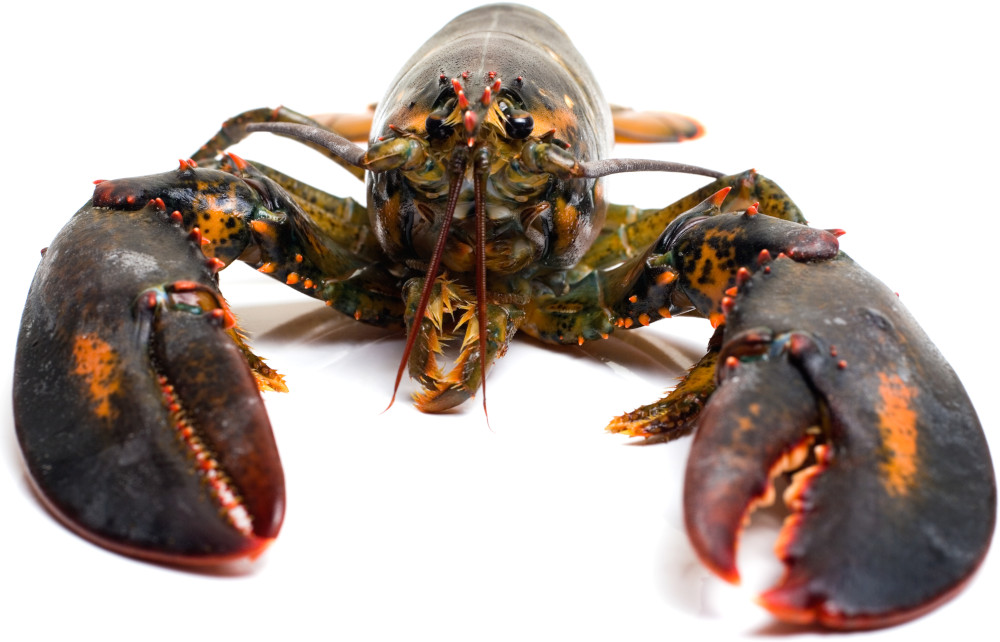
Based on the available scientific data, there is evidence that both octopi and lobsters, do exhibit signs of ‘discomfort’ or ‘pain’ in response to noxious, or painful, stimuli.
Octopi and lobsters are two types of marine animals (cephalopods and crustaceans respectively) and are part of a larger group of animals collectively termed ‘invertebrates’, which represents the most diverse group of animals on our planet. Like most other invertebrate species, octopi and lobsters lack a backbone and have many other key differences when compared to vertebrates such as mammals. However, despite these differences, scientific research in recent years strongly supports that both octopi and some crustaceans (i.e., true crabs and lobsters) likely possess the biological mechanisms necessary to experience and respond to pain in similar ways to vertebrates.
These invertebrates both belong to their own sub-group, each with distinct differences making them individually unique. These species are used by humans in different ways, including recreational fishing, research, farming (aquaculture), commercial fishing as well as being on display at zoos and aquariums. Some progress has been made in the zoo sector to help improve the welfare of these species in captivity through the development of animal care and welfare guidelines. However, commercial fisheries of these marine invertebrates continue to grow globally and are largely unregulated from an animal welfare perspective.
Cephalopods
The octopus belongs to a group of animals called cephalopod molluscs, which also includes the squid, cuttlefish, and nautilus. This group of animals is one of the most studied of all marine invertebrates in relation to pain perception and intelligence. A scientific article published in 2019, found that octopi have proven in many circumstances that they do have, as humans consider it, a ‘mind’, including reasoning and problem solving [1]. A review published in 2021 in the UK provides evidence that cephalopod molluscs are sentient [2].
Crustaceans
Crustaceans include a wide variety of species including true crabs (infraorder Brachyura), lobsters/crayfish (infraorder Astacidea), prawns and shrimp. It has been challenging to study and understand crustaceans’ ability to feel pain, however, a review published in 2021 in the UK provides evidence that these decapod crustaceans are sentient [2]. Despite some diverse opinions in the scientific community, increasing evidence in support of giving crustaceans greater consideration, especially regarding legal protection, is emerging particularly for true crabs and lobsters. A study in 2021 [3] found that crustaceans have similar pain responses as fish; that they can anticipate and respond to pain or injury rather than producing a reflex response (which has been a common view)[4]; and that there is no evidence to show that they cannot feel pain. Further demonstration of responses consistent with pain were found in the glass prawn (Palaemon elegans), who responded with nipping and picking at the eyestalk as well as tail-flicking (escape response) when a noxious chemical was applied to one eyestalk [5].
Do they feel pain?
A 2021 UK review, which examined the data from over 300 studies and used a set of established criteria to determine if certain marine invertebrates, including cephalopods and crustaceans, have consistently shown evidence that they possess sentience and the ability to feel pain [2]. The review recommended that:
- There were no cases of either groups showing sufficient indication that they lacked sentience or the ability to experience pain.
- If cephalopods are to be included in the scope of animal welfare legislation, then crustaceans should also be included [2].
Legal protection
In 2013, the European Union’s Council of Europe implemented a refined version of an existing legislative treaty, now known as Directive 2010/63/EU, which defines the ethical and welfare standards for use of animals in scientific research. The revisions to the treaty include more stringent regulations for use of vertebrate animals, and similar regulations for the use of live cephalopods. These amendments were made with consideration of the substantial amount of published data supporting the notion that octopi and other cephalopods experience pain perception.
In Australia, whether cephalopods and crustaceans are or are not legally protected varies depending upon each state and territory’s definition of an ‘animal’ within their jurisdiction’s animal welfare legislation. In the ACT and Victoria, both animal groups are protected under animal welfare legislation because they are included in those jurisdictions’ definitions of an ‘animal’. Cephalopods also have legal protection in Queensland, while crustaceans have protection in New South Wales and Northern Territory’s animal welfare legislation.
To ensure that octopi and lobsters have consistent legal protection across Australia, it is vital that all state and territory animal welfare legislation recognise that cephalopod molluscs and decapod crustaceans are ‘animals’ and acknowledge that they are sentient.
References
[1] Mather J (2019) What is in an octopus’s mind? Animal Sentience 26(1).
[2] Birch J et al (2021) Review of the evidence of sentience in cephalopod molluscs and decapod crustaceans. LSE Consulting, London UK.
[3] Elwood RW (2021) Potential pain in fish and decapods: Similar experimental approaches and similar results. Frontiers in Veterinary Science.
[4] Barr S, Elwood RW (2024) Trade-offs between avoidance of noxious electric shock and avoidance of bright light in shore crabs are consistent with predictions of pain. Animals 14(5):770.
[5] Barr S, Elwood RW (2024) The effects of caustic soda and benzocaine on directed grooming to the eyestalk in the glass prawn, Palaemon elegans, are consistent with the idea of pain in decapods. Animals 14(3):364.
